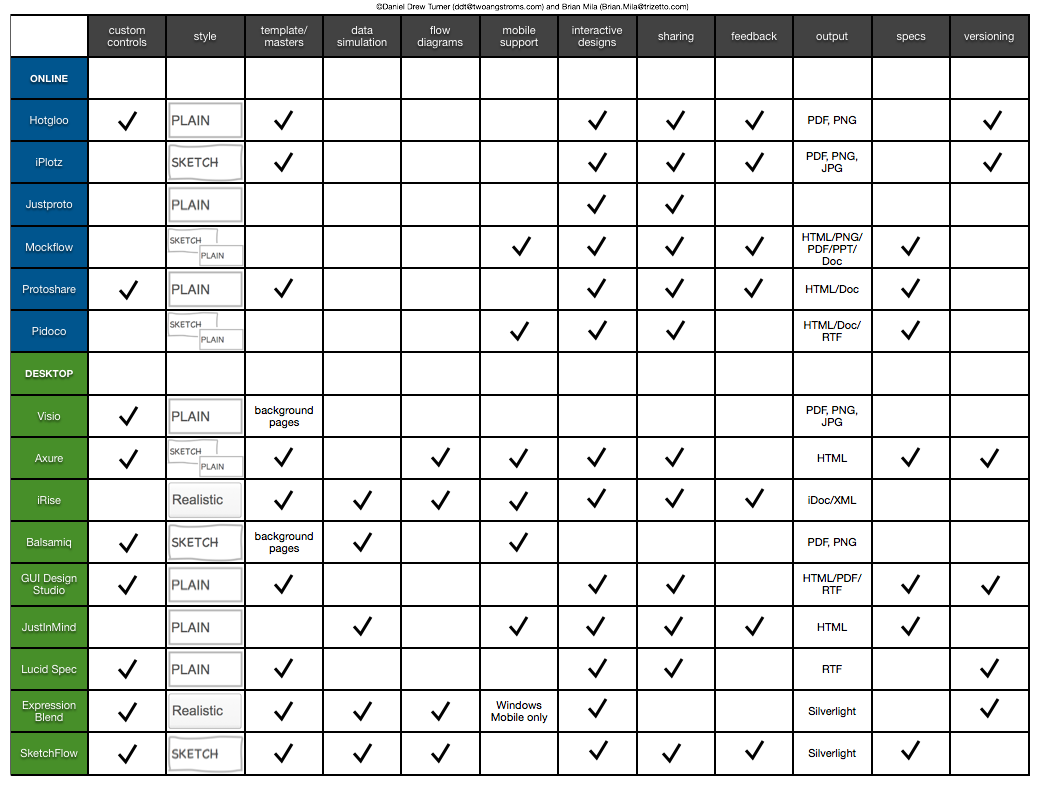Card Sorting App Comparo
/A great chart from a student project at Charles Stuart University. See the whole blog post at http://dirtarchitecture.wordpress.com/user-research-tools/

A great chart from a student project at Charles Stuart University. See the whole blog post at http://dirtarchitecture.wordpress.com/user-research-tools/


Use cases, user interaction flows, icon and graphic design
My first-ever iPhone app icon!
And here's the video:

First quick pass on map display wireframe


Climatix grew out of a project begun by Robb Miller and Nick Orenstein at a green technology hack. The goal was to enable users to visualize, at a personal level, the vast but arcane data available about air pollution, power plant emissions, groundwater quality, as well the carbon footprint of facilities they may see every day. All this information is currently in open databases; it's there for the taking, but nearly impossible for the average person to make sense of. Security through obscurity, in a way.
The Climatix mobile app allows users concerned about environmental (policy, development, social justice, zoning, and health) issues to explore their world in a familiar and interactive way, seeing in real(ish) time the environmental and energy usage hot spots around them, or wherever they search. Not only can users use a familiar map interface, but Climatix's augmented reality (AR) interface, built on the Layar API, shows users these hot spots within the real world, and how to get to -- or avoid -- them.
Users can also add to the environmental data in a unique way. If a user sees a potential point of concern, whether it's a suspicious dump, a wasteful business, or leaking pipe, he or she can take and upload a photo to the Climatix app. This pins real-world experience to formerly abstract data and can teach all users of the Climatix app the cost of pollution, or uncover hidden sources of it.
This is a great tool for: individuals curious about their local environment, urban planners, local/state governments that want a better sense of where they need to focus their scarce resources, real estate developers, health researchers.
Most of what affects our lives and health -- air, energy waste, toxins -- is invisible. The Climatix app allows users to see this hidden world, and help uncover it further.
[Also on the project: Rico Mok and Evan Huang.]
See Climatix for more information.

These graphics are built off of the data compiled by Brian Mila, Senior Product Designer at The TriZetto Group. Current as of early January 2012.

A comparison of annual license costs for the UX tools
Frankly, I just don't have enough exposure and experience to figure out when something is a workshop, a conference, or a meetup. They are all very cool, in that you get to see great work being done and learn a lot. It's just that the taxonomy is a bit arcane. In any case, I was lucky enough to attend last week's Digital We from the Social Apps Lab at CITRIS at UC Berkeley. There were fantastic presentations from a range of people within and across disciplines, all with a common interest in increasing people's participation in social causes and society. The participants ranged from a social scientist trying to come up with a "phylogeny of forms" of participation (I'll steal Alenda Chang's links to Kelty's works: “Birds of the Internet” and Two Bits: The Cultural Significance of Free Software) to undergraduates implementing a very Crowdmap-like tool for tracking and combating the spread of dengue fever (sorry, no direct link, but background here).
(You can see more updates by searching the Twitter hashtag #DigitalWe.)
Two notes -- one personal and one professional.
The professional is that one of the overarching themes of the day, sometimes stated explicitly, is that neither technology nor social science would be sufficient to save the day. Not only are both necessary, but both working together (sorry, those who dream of entirely computer-generated products) are needed for designing products, tools, processes that are efficient, effective, and engaging. Hearing this as an I School grad, it was very, very cool to hear that the way we were thinking about things there isn't totally off-base, or limited to our own little world.
The personal is that I would love to work in this sort of environment. Or this environment. So many of the skills we learned at the I School can be and are applied in these projects, though the sharing of expertise, research, and background is still far from transparent and frictionless. Researching how people think of doing things, what their actual problems are, and ways to help them naturally and engagingly make themselves and the world a better place. What can I say? I'm a sucker for the campfire rule.
Interaction Designer, User Experience Researcher, Information Architect,
Journalist, very associative thinker. MIMS 2011, UC Berkeley School of
Information -- daniel drew turner
Powered by Squarespace.